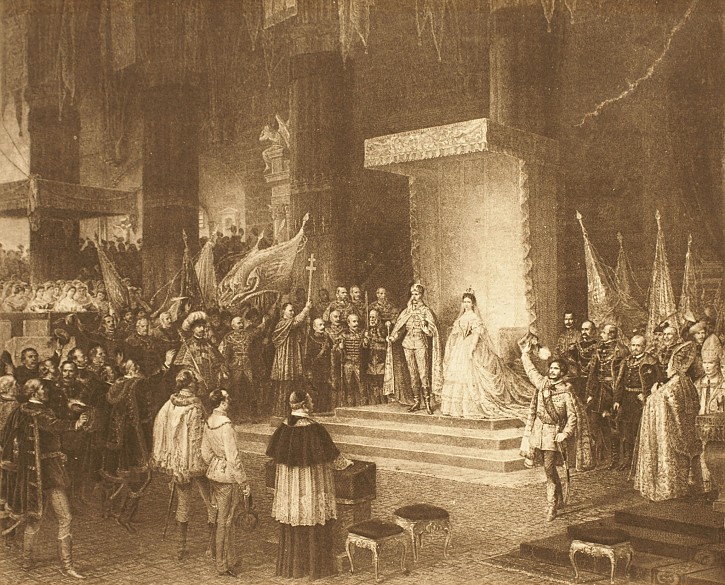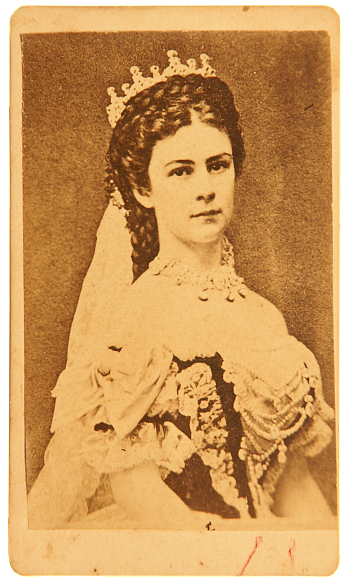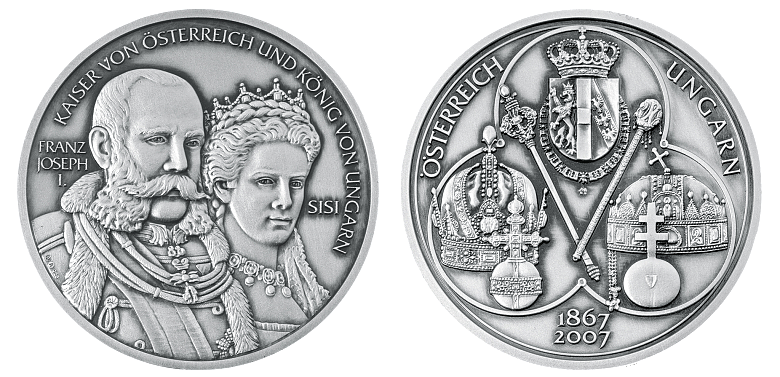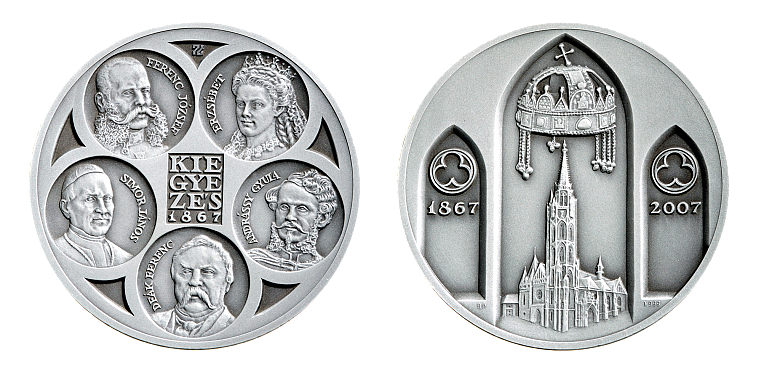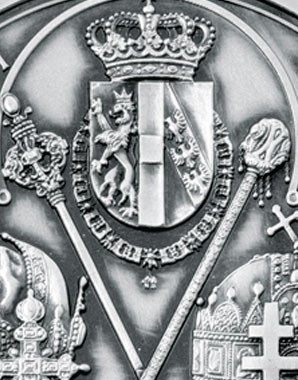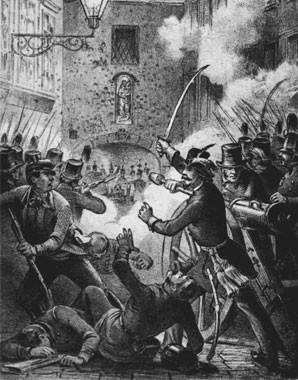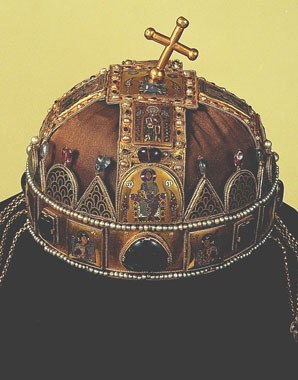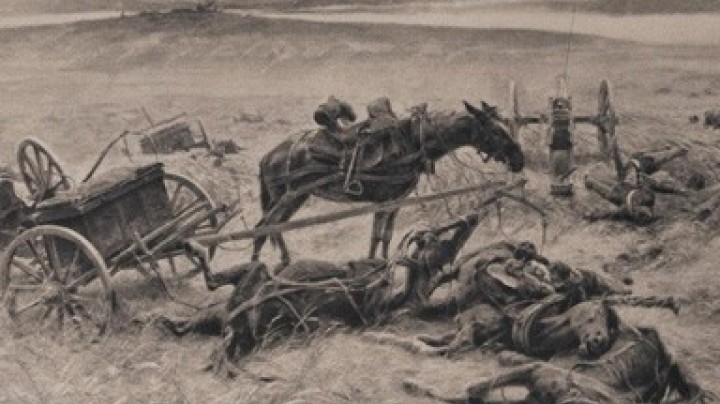The Austro-Hungarian Dual Monarchy: the coronation of the Hungarian royal couple
The Compromise (Ausgleich) with Hungary created the Austro-Hungarian Dual Monarchy. Only then were Franz Joseph and Elisabeth crowned in Budapest as King and Queen of Hungary.
His spelling still not entirely reliable, the nine-year-old Crown Prince Rudolf gave an account in his school exercise book of the coronation ceremony held in Matthias Church in Budapest. Here, on 8 June 1867, using the Crown of St Stephen, Franz Joseph and Elisabeth were crowned King and Queen of Hungary by Hungarian Prime Minister Count Andrássy and the Primate of the Catholic church:
"In the church there were many magnates and officers, then the music started and the Primate and many Catholic and Greek bishops and very many other priests. Then came Papa and Mama. Mama sat down on a kind of throne, and Papa went to the altar, where a lot of Latin was read out ... Afterwards, the drums resounded and Andrássy and the Primate put the crown on Papa’s head. Then the imperial orb and sceptre were placed in Papa’s hands."
As a result of defeats in Italy in 1859 and against Prussia in 1866, Franz Joseph's position within the Monarchy had been considerably weakened. This forced the emperor into a hasty compromise with the representatives of Hungary, something his wife Elisabeth had also strongly favoured. In 1867, Franz Joseph agreed to the Compromise plan, which required the restoration of traditional rights and Hungary's independence, and which reinstated the old Hungarian constitution dating back to the period before the 1848 Revolution. In personal union, Franz Joseph was now simultaneously King of Hungary and Emperor of Austria, but through the Compromise, the two halves of the Empire were two formally independent states of equal status.
As a coronation gift, the royal couple were given the Baroque palace of Gödöllö. The Swiss envoy did not experience the ceremony in quite the same manner as the young Rudolf, finding it no longer contemporary in all its pageantry: ‘Despite its pomp and veritable magnificence, yet the entire procession gave the detached observer somewhat the impression of a carnival masquerade ... This vestige from the Middle Ages simply does not fit with our times.’ The envoy moreover noted the irony of Franz Joseph being crowned by Count Andrássy:
"It gives an extremely strange impression to see the manner in which the man whose death sentence Emperor Franz Joseph had signed in 1849 and whose name was nailed to the gallows in Pest, now, eighteen years later, places the crown on the head of the monarch whose highest confidence he today enjoys."
